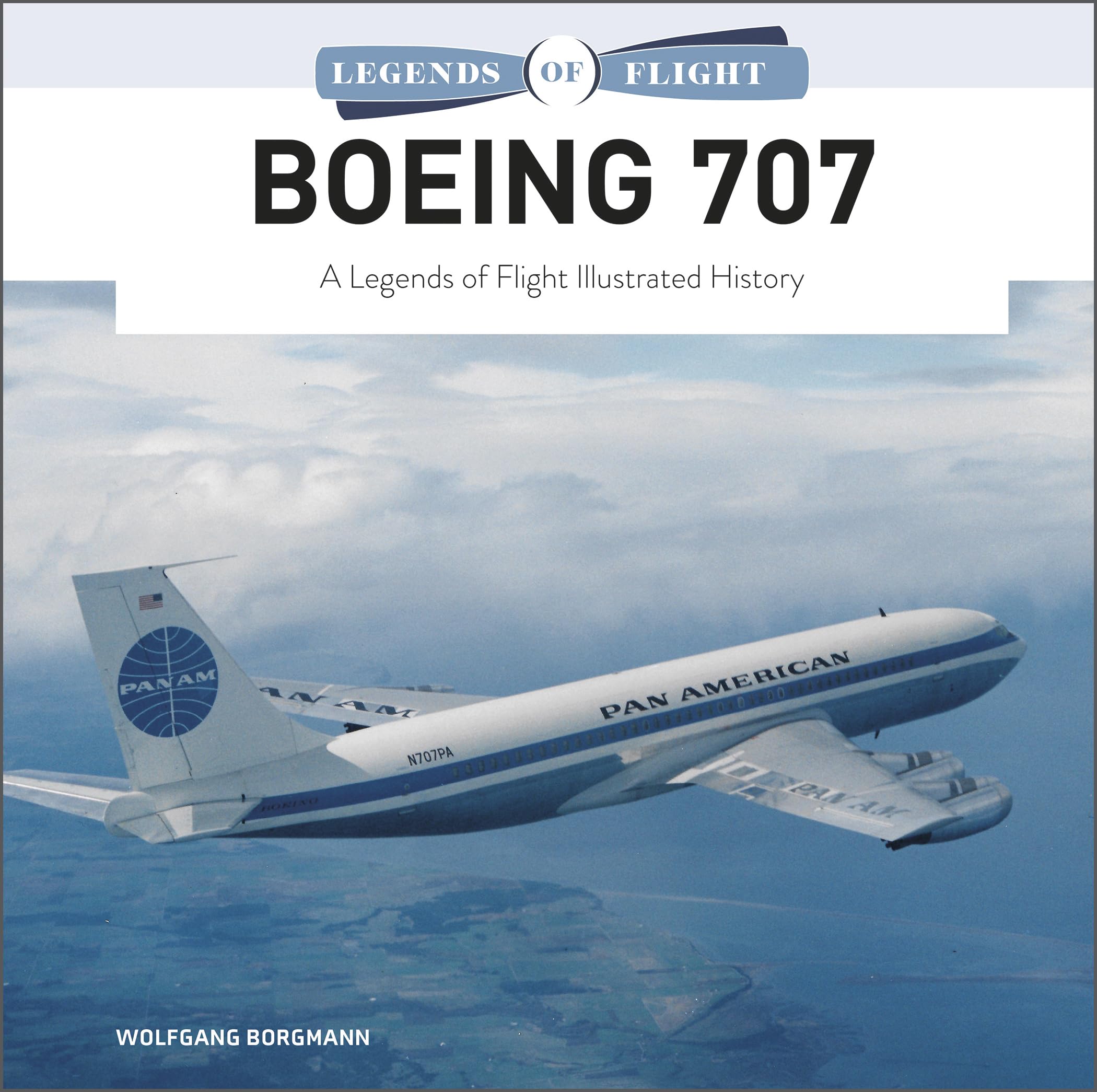Customer Services
Copyright © 2025 Desertcart Holdings Limited
Desert Online General Trading LLC
Dubai, United Arab Emirates


Boeing 707: A Legends of Flight Illustrated History (Legends of Flight, 6)
J**N
Surprise! It’s actually about Lufthansa’s 707s
This is not a bad book for what it is, but its description is misleading. Nowhere in what’s presented to potential purchasers is there any indication that would prepare the buyer/reader to learn, in the book’s introduction, that “…the description of this intercontinental jet’s history will focus on its service with Lufthansa, its former charter subsidiary Condor, the Luftwaffe’s executive transport flight, and various smaller airlines in German-speaking countries….” Not at all what I was expecting. Yes, there’s a chapter on Pan Am’s role in the 707’s development and its operation of the model, but the overall focus is unexpectedly very much on German/LH 707s. That should have been mentioned in the description.
J**N
Favoring German airliners who flew 707s is biased reporting
I would have loved the book if it's author made a generous effort to include more prolific users of the Air raft than to focus on German airliners who flew the 707.
H**E
Mostly Pictures and Few Details
Expected details like in the Boeing 757 book that I recently got from the same publisher, but a different author. I was expecting a very detailed coverage of the many specs and other details that were a part of the Boeing program for America's first Jet Transport of which I was a part of.
J**O
Interessante a forma como a história do B-707 é contada em capítulos
Interessante a forma como é descrito o desenvolvimento do B-707. Entretanto, há poucas fotos de aviões de cias aéreas.
B**Y
Excellent production quality, great photos
I see from other reviews some carping about this book's alleged emphasis on German airlines and liveries. First, it's a German effort, so duh. Second, *anything* related to the 707 is catnip for the true 707 aficionado. If that's you, you'll quite like this book.
M**.
as discribed
highly detailed study of a pioneering airliner
P**A
Biased
This book, like the others by the author ( A300/A310, DC -10/MD -11 and Boeing 757 ) is printed on good quality paper. I only lack the book on the Boeing 737 in the series but am unlikely to buy it. I am eagerly looking forward to the author's forthcoming books on the DC-9 and 747.The book is heavily biased towards Germany and Lufthansa (LH) There are some 70 photos of LH 707s and their interiors. The author could have been more selective. There are plenty of photos available of various airlines which operated the 707 in the past. Why ignore them? However, there are beautiful air to air shots of LH's 707/720s, especially those on pp 83 and 89. The cabin shots (LH again) on pp 92 and 93 should have been in color. I'm crying myself hoarse on flight deck seats being unoccupied for photography and the flight engineer's panel being shown separately ( see pp82 and 112 for instance ).The author continues his obsession with the German HFB 320 Hansajet( which he started with in his A300/A310 book) and Heinkel He 178, making a strong case for German technology and its knowhow leading to jet engine development. He makes it clear that after WW2 , the British wanted nothing to do with the Germans or their technology whereas Uncle Sam shrewdly made it easy for German scientists to immigrate to the US and utilized their skills there. The results ---- the vastly successful 707 and DC- 8 which dominated world air transport for more than four decades compared to the British falling flat with their Comet and VC10. America continued its streak of successes thereafter and does so to this day with Europe responding with its A300 and later aircraft only from 1976.The 707's initial engine type, the PW ( Pratt & Whitney ) JT3C-6, had water injection and was fitted with a large noise-suppressing nozzle with 20 separate tubes (which soon became covered with soot from wet take offs when not only noise but also black smoke was emitted on an impressive scale). The Rolls Royce Conway engine was more powerful, had lower installed weight and much better fuel consumption than the PW JT3C-6. PW responded by fitting a fan ( two stages of enormous blades ) to what became the JT3D. It then coined the name ' turbofan ' which sounded better than 'bypass turbojet ' ( the Conway). The JT3D dispensed with water injection which had required the carriage of several hundred gallons of deionised water and alcohol. The JT3D also had double thrust reversers.The lesser drag of the 707's smaller wing gave significant fuel savings when compared to the VC10.Boeing 707 innovations which set the industry standard included folding armrests, opaque plastic window shades and cantilevered seats supported by just two sets of legs for easy underseat stowage of carry on articles.Perhaps because of its initial dependence on water injection the 707 was nicknamed 'Water Wagon.' The 1967 Boeing Annual Report states a top cruising speed of 620 mph for the turbofan powered 720B.The author has not been convincing enough in his introduction as to why the book concentrates on Germany and the Luftwaffe. Perhaps because it is his home country? Is that all? No one is asking him to describe the history of 'all 707s operated in the world '. Just the photos would have sufficed.
Trustpilot
2 weeks ago
2 days ago